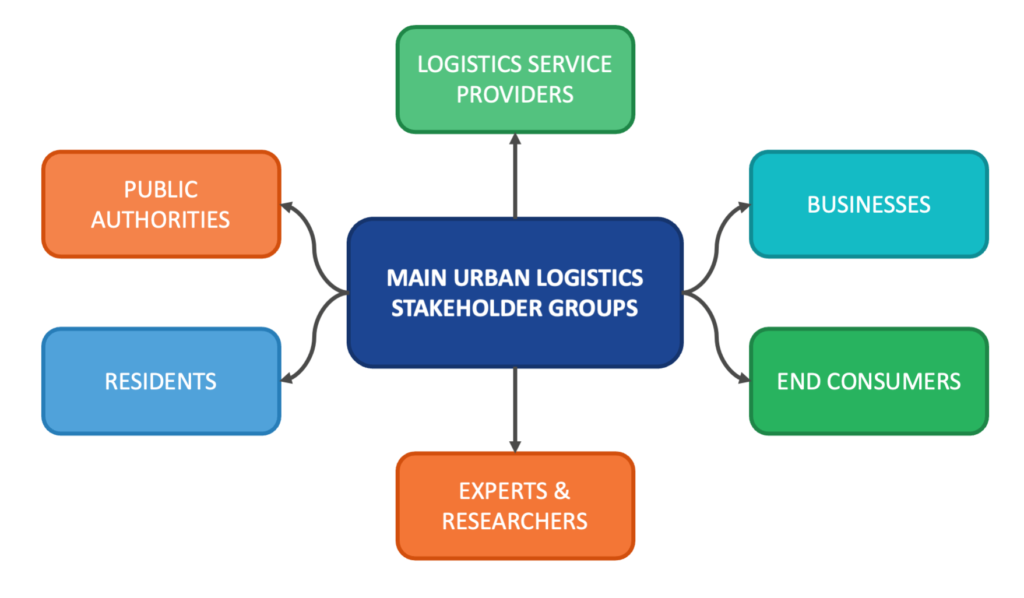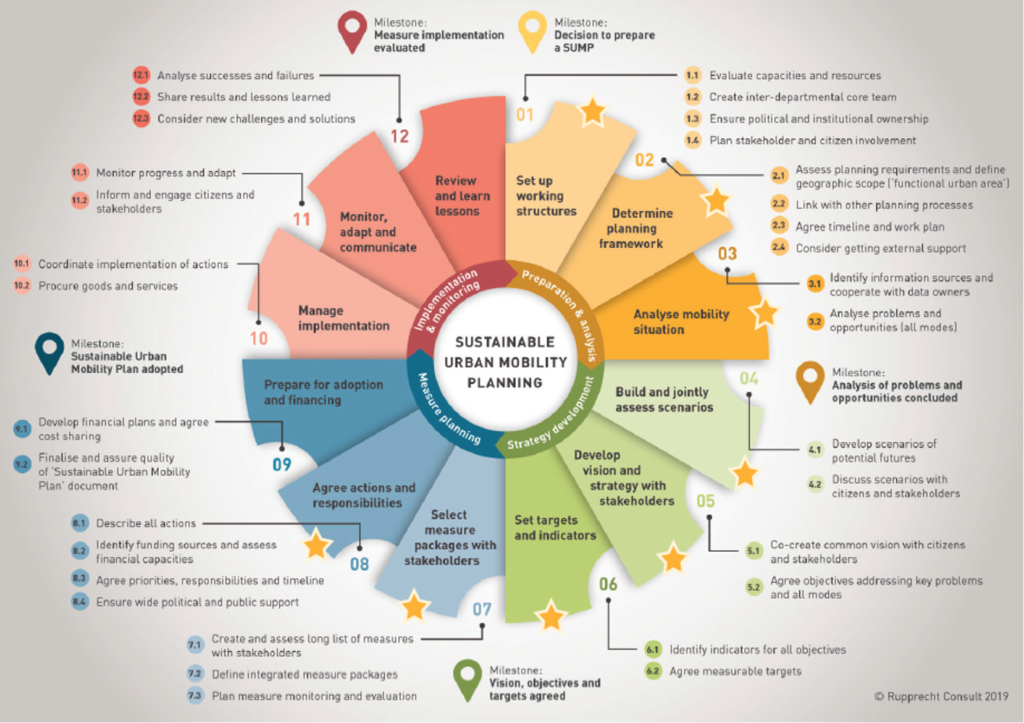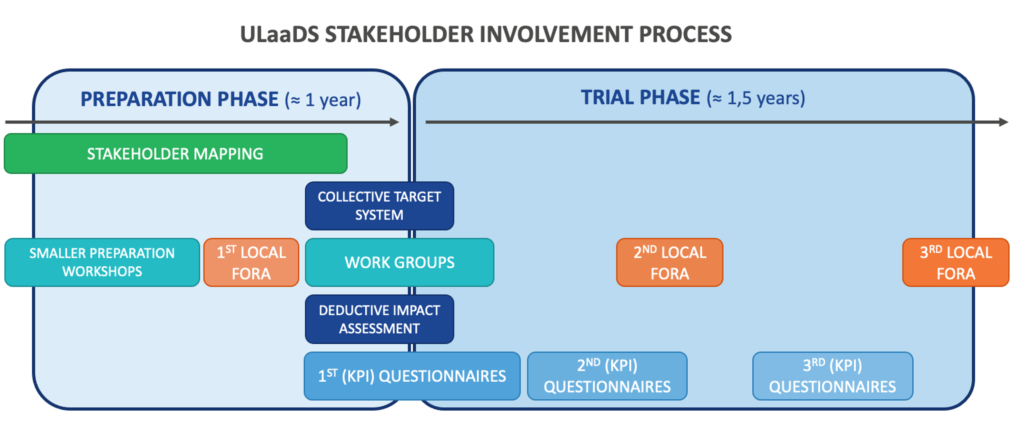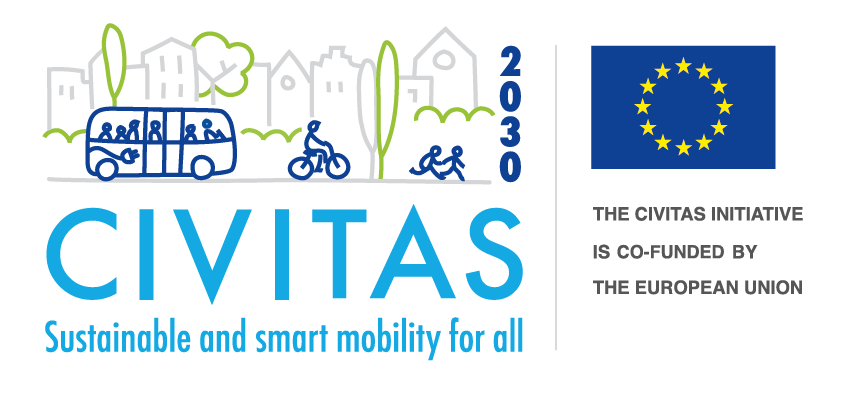How to kickstart sustainable Urban Logistics initiatives
How to kickstart sustainable Urban Logistics initiatives
By Günther Illek, Melanie Troppe (IFZ), and Lorena Axinte & Nacho Sarrió (Bax & Company).
Logistics plays a key role in our daily lives. Rising urban populations, economic activities and new trends naturally lead to an increase in logistics activities. Although the word logistics tends to conjure up images of couriers and parcels, it spans many industries. This of course includes retail and food & beverage, but also waste management, construction, and many others. Now, especially with the rise of the On-Demand Economy, discussions on the potential environmental and socio-economic impacts of this trend have resurfaced.
- How can conventional delivery methods using fuel driven vans and lorries be replaced by more sustainable alternatives?
- How can we improve efficiency and increase sustainability?
- Who should be responsible for taking the initiative for change?
These are the questions we’ll explore in this ULaaDS insight.
Who has a stake in urban logistics?

Logistics service providers are the key stakeholders here for obvious reasons, however, they are not alone.
Recipients, their expectations, needs and willingness to pay also play an essential role in the overall logistics ecosystem. A shift in their expectations could easily lead to changing solutions in the transport sector. Recipients can be further divided into businesses (leading to business-to-business models – B2B) and individual end-customers (in business to customer models – B2C).
With rising logistics activities in cities, residents are also starting to receive their deserved recognition as relevant stakeholders who should be included in the discussion for new solutions. The term “residents” normally describes people directly affected by these solutions (for instance when a new hub opens in their neighbourhood), and they can be vital in ensuring the successful implementation of such (e.g., in the case of determining the best locations for parcel lockers).
Last but not least, public authorities themselves – often the City administrations – are obvious players and are currently increasing their efforts to solve the raising challenges occurring in urban areas due to logistics activities.
In numbers, experts and researchers make the smallest group among the stakeholders. Their role is to bring in knowledge of appropriate and viable solutions, study patterns and analyse the impacts of project implementation.
Drivers of innovation
Sustainable urban logistics can be an effective element in contributing to environmental goals and a higher quality of life within a city. For this to happen, we need innovative solutions within the urban logistics network. These solutions can have different drivers, so let’s have a look at the most common ones for those of you interested in supporting your city.
Company-driven initiatives
Company-driven initiatives are often based on economic decisions. In dense inner-city surroundings or within a pedestrian zone with limited time windows for delivery, a micro hub concept using cargo bikes for last-mile delivery can be much more cost-efficient than conventional approaches. Moreover, customer expectations may change, leaning towards sustainable deliveries and offering new economic potentials.
Similarly, many companies are already preparing for future access restrictions (such as Low Emissions Zones) by using smaller and low-carbon vehicles, outracing the competition on the way to sustainable last-mile logistics. Numerous new companies and start-ups are also entering the field, introducing new solutions like parcel lockers, shared platforms or vehicle sharing options. Last but not least, actions to “green” the internal logistic activities of course closely connect to a company’s attitude towards sustainability and bring value in terms of marketing too.
Research-driven initiatives
Science plays an important role in the design of sustainable logistics solutions; developing technical vehicles, devices and IT solutions, as well as elaborating potential business and operating models for companies. Research solutions may sometimes be very optimistic, but pay limited attention to aspects of economic viability. In many cases, research-driven initiatives appear in combination with an actual funding scheme that acts as a kind of “business incubator”.
Private and community-led initiatives
Certain solutions, like neighbourhood hubs, cargo bike rental schemes, peer-to-peer (P2P) solutions or neighbour pick-ups are based on private initiatives. Some of them can offer great value and upscale potential. Private initiatives are normally based on contribution, social interaction and good neighbourship.
City-driven initiatives
Initiatives from public authorities are normally city-driven initiatives, as the legal and infrastructural frameworks for sustainable solutions lie in the city’s scope for action (e.g., planning and building permits). Cities benefit directly from successful results and hence have a direct interest in change. As other types of initiatives are normally implemented by just a handful of logistics service providers, more and more cities are taking action to accelerate the shift to sustainable last-mile solutions. Ways to do so can be regular networking activities, storytelling approaches about the future outline of the city, funding & support, the implementation of legal framework conditions based on strategies and concepts, and the introduction of sustainable solutions in public procurement.
The collaborative approach
As combined efforts often bring the best results, many initiatives are based on collaboration as a key path towards innovation. Such projects include stakeholders from all sides, with researchers, logistics service providers and cities working hand in hand to implement and test novel solutions and concepts for last-mile deliveries. Recent trends focus especially on the implementation of different kinds of micro hubs with cargo bike deliveries, IT solutions (digital consolidation, dynamic routing etc.), and on the installation of parcel lockers to minimise the number of delivery attempts – examples of solutions that strongly benefit from the collaborative approach.
The value of multi-stakeholder approaches
As we’ve seen, logistics solutions do affect different stakeholders in many ways. As a result, the introduction of new, more sustainable solutions should be developed in a collaborative way to achieve the best outcome for all the parties concerned. Multi-stakeholder approaches can take many different forms, varying in size, stakeholder mix and meeting frequency. The right solution depends on what is planned and the expected outcomes, but be sure to give the process enough time to get the best results.
Often, when bringing many different stakeholders together, it is important to use specific tools for consensus or decision making. Useful tools may be the collective target system, the analytical hierarchy process, MAMCA or even a conjoint analysis approach.
SULPs – a clear commitment from the city
SULP stands for Sustainable Urban Logistics Planning; a method to explore the status quo, future visions, and necessary actions to reach these visions. SULPs foster the exchange and collaboration between stakeholders and provide a solid foundation to kickstart sustainable urban logistics solutions. The results of SULPs offer an overview of the current logistics ecosystem in a city, building the base for collaborative decision-making and the elaboration of clear sustainable long-term solutions. So, if you are a stakeholder from a city, a SULP process may be the solution for you to kickstart sustainable logistics initiatives in your hometown!
The SULP process consists of 4 phases: preparation & analysis, strategic development, measure planning, and finally implementation and monitoring. SULPs are based on the SUMP concept (Sustainable Urban Mobility Planning), which was already introduced in several EU projects almost a decade ago. A visual representation of the different phases in a SUMP/SULP process is presented below, and for further information on the topic, check out the European Platform on SUMPs guide on how a SULP can be implemented here.

The ULaaDS connection: a combined approach
ULaaDS, as a clear example of a collaborative approach, puts a strong emphasis on bringing all stakeholders on board while implementing solutions that are adapted to local needs. Additionally, such solutions are intended to comply with economic and social factors too. Such a process can inspire and provide valuable ideas to kickstart sustainable logistics initiatives in all cities.
Besides numerous smaller scale conversations with different stakeholders, there is also a series of local fora for each trial in ULaaDS, where a wide array of stakeholders of all groups will be involved to initiate fruitful discussions. The plan for the first of these fora starts with the discussion of future visions for each city as a baseline. Then, the planned logistics solutions will be introduced, and details of the actual implementation discussed. Below is an overview of the ULaaDS multi-stakeholder approach.

The outcomes of the local fora will be processed and combined with the outcomes of other activities from the preparation phase. The process aims to update and optimise the original plans for the ULaaDS trial phase.
Two further local fora in the mid and end of the trial phase will give the necessary room to discuss, adapt and improve the trials among the different stakeholders during and after the project. They will also provide best practices and outputs which will serve for future developments and SUMP/SULP adaptations and recommendations.
The ULaaDS multi-stakeholder approach is further supported by the application of the collective target system – a questionnaire about the visions and targets of the different stakeholder groups in terms of economic, ecological, and social aspects. Frequent meetings and working groups among the implementation partners and stakeholders are rounding up the whole process.
Over time the results of the project’s multi-stakeholder approach will be revealed, so please follow us on social media and keep an eye on our website for updates! If you are interested in learning more about the ULaaDS multi-stakeholder approach, check out our new deliverable ‘Local ecosystem stakeholders’ needs and requirements & prioritisation of use cases’ on our Resources page.



